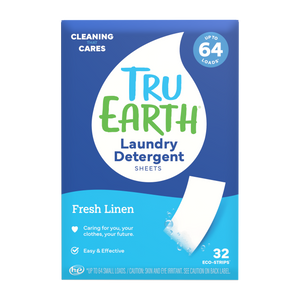Clean, refreshing water is a fundamental necessity, and a water dispenser is a convenient way to ensure hydration in homes and offices. However, paying attention to the cleanliness of your water dispenser can lead to the growth of harmful bacteria and compromise the quality of the water it dispenses.
In this guide, we'll explore comprehensive and safe methods for cleaning your water dispenser, covering everything from routine maintenance to deep cleaning to guarantee the safety and purity of the water you consume.

The Components of a Water Dispenser
A water dispenser, whether a countertop model or a freestanding unit, is a simple yet key appliance designed to provide easy access to drinking water. A grasp of its basic components is vital before cleaning to ensure a thorough and effective process.
Water Reservoir
The heart of any water dispenser is its reservoir, which stores the water before dispensing. Depending on the dispenser's design, this reservoir can vary in size and shape.
It is often located at the top or bottom of the unit and may be removable for easier cleaning. The reservoir is the primary area where contaminants can accumulate, making regular maintenance essential.
Tap or Spigot
Connected to the water reservoir, the tap or spigot is the point of access for dispensing water. This component is prone to splashes, drips, and contact with hands, making it a potential breeding ground for bacteria.
Some models come with a lever-style tap, while others feature a push-button or paddle design. Regardless of the type, the tap requires diligent cleaning to ensure the water flowing through it remains pure and untainted.
Cooling and Heating Systems
In addition to dispensing water at ambient temperature, many modern water dispensers have cooling and heating systems. The cooling system typically includes a refrigeration unit that chills the water, while the heating system involves a heating element for warm or hot water.
These components introduce complexity to the cleaning process, requiring attention to detail to prevent the growth of mold or bacteria in the hidden recesses of these systems.
Routine Cleaning Practices: A Preventive Approach
Turn Off and Unplug: Before cleaning, turn off the water dispenser and unplug it from the power source. This ensures your safety and prevents any electrical mishaps during the cleaning process.
Empty the Reservoir
Empty any remaining water from the dispenser reservoir. For bottled water dispensers, remove the bottle. If your dispenser has a hot water feature, wait until it cools down before proceeding.
Disassemble removable parts such as the drip tray, nozzle, and other detachable components. Wash these parts with mild soap and warm water. Pay attention to any nooks or crevices where bacteria might accumulate.
Clean the Reservoir
Wipe down the interior of the water reservoir using a sponge or cloth soaked in a mixture of warm water and mild dish soap. Ensure you reach all areas, and remember the corners and edges where residues may hide.
Sanitize with White Vinegar
To disinfect and remove any lingering bacteria, prepare a solution of equal parts white vinegar and water. Pour this mixture into the reservoir and run it through the system, allowing it to sit for 10–15 minutes. Vinegar's natural acidity is effective in killing bacteria.
Flush with Clean Water
After sanitizing, flush the system with fresh water multiple times to ensure the vinegar is thoroughly rinsed out. This step is essential to prevent the vinegar's taste lingering in the water.
Deep Cleaning: Periodic Maintenance for Optimal Hygiene
Inspect for Mold
Regularly inspect your water dispenser for any signs of mold, especially in damp areas. If you spot mold, clean it immediately with a mold-killing solution.
Replace Filters
If your water dispenser has a filtration system, follow the manufacturer's filter replacement guidelines. This is key for maintaining water purity and preventing the growth of harmful microorganisms.
Consider UV-C Technology
Some modern water dispensers come equipped with UV-C light technology, which helps kill bacteria and microorganisms. If your dispenser has this feature, follow the manufacturer's instructions for usage.
Maintaining a Safe Environment for Water Storage
Proper Storage
If you use a bottled water dispenser, store water bottles in a cool, dry place away from direct sunlight. Exposure to sunlight can promote the growth of algae in the water.
Regular Checks
Periodically check for any leaks or unusual odors around the dispenser. Addressing these issues promptly can prevent more significant problems and ensure the continued safety of the water supply.

A Hydrated and Healthy Lifestyle
In conclusion, maintaining the cleanliness of your water dispenser is essential for ensuring the safety and purity of the water you consume. Regular, routine cleaning practices, coupled with periodic deep cleaning and preventive measures, will safeguard your health and prolong the life of your water dispenser.
By adopting these safe and detailed cleaning methods, you contribute to a hydrated and healthy lifestyle for yourself and those around you. Remember, the key to optimal water quality is in your hands, so clean responsibly and drink confidently.

